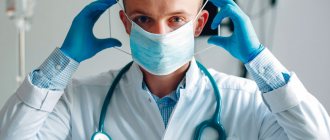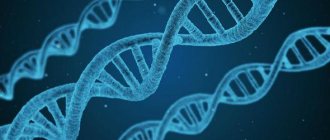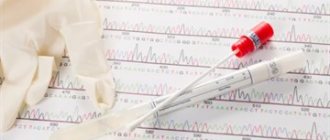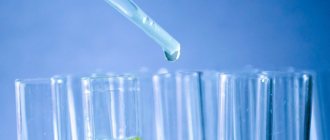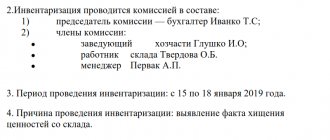Areas of application
Forensic scientists were the first to appreciate all the advantages of the then young and undeveloped DNA testing technique. And, this was not without a coincidence. The discovery of DNA identification, similar to fingerprint identification, was discovered by British scientist Alec Jeffreys on September 10, 1984. He was studying abnormalities in chromosomal DNA using X-rays, and noticed that nucleotides have a unique sequence and it differs for everyone.
The discovery gave rise to the variety of applications of DNA analysis that exist today - we can observe how incredible technology from science fiction becomes everyday reality. It's surprising that Alec Jeffries never won a Nobel Prize. He still lives in the UK and is 69 years old.
These days, with a DNA test you can:
- Establish a person’s identity by his smallest traces: by the glass from which he drank; a drop of blood dried on a shirt, etc.
- Establish paternity.
- Establish relationship and its degree between an unlimited number of people (without studying the DNA of fathers and mothers).
- Identify an infection or virus before the first symptoms of the disease appear.
- Create a diet that is most suitable for the body, based on its innate individual characteristics.
- Predict predisposition and contraindications to sports and physical activity.
- Find out whether there are traces of hereditary diseases and predisposition to them in the genome.
- Find out the sex of the child even before his birth, as well as the Rh factor and genetic failures (if any).
And this is only from the range of possible applications available to the general public. In the future, genetic scientists hope to find the secret, if not of eternal life, then to develop a method to extend it many times over.
Refusal to acknowledge paternity
Even if they are similar in blood group or appearance, the father may still refuse this fact. And if recognition of paternity is very important, it is necessary to go to court. Establishment may be delayed if the defendant is dead or missing.
But in any case, you should go to court and submit the necessary documents:
- statement of claim;
- papers for the child;
- documents indicating that the defendant is dead or missing;
- other papers that could prove paternity.
Download a sample statement of claim to establish paternity
Witnesses will also be needed. Even if the man did not officially recognize the child (did not give him his last name, etc.), he could take care of him, provide financial assistance and express his paternity in other ways.
In addition to the standard information, the statement of claim should include the following:
- length of stay of the defendant with the child (address);
- the reason why the parents did not register the marriage;
- facts establishing that the defendant took part in raising the child;
- requirement to establish paternity.
If the alleged father is a foreign citizen, then in the event of his death, to determine the relationship, all documents should be submitted to the consulate of his country.
Materials for analysis
It is possible to isolate a deoxyribonucleic acid molecule from almost any sample of human tissues and fluids. Due to the ease of use at home, the most widely used method is the extraction of DNA from the saliva of a subject. In order to independently collect saliva for analysis with a cotton swab, you do not need special skills and knowledge. It is enough to maintain cleanliness and hygiene. Immediately before taking the sample, it is advisable not to eat for 2-3 hours. It is also better to drink in moderation, one or two sips and only water.
The following are suitable for analysis: nail clippings, hair, cigarette butts, chewing gum, stains of bodily fluids on fabric, etc.
How to do a DNA test at home yourself
So, is it possible to do a DNA test at home ? Direct genetic research is carried out in laboratory conditions by experienced experts. And it is quite possible to collect samples of biomaterial yourself.
Detailed instructions will help you do this quickly and correctly :
- It is necessary to prepare materials - cotton swabs and clean paper envelopes for each person participating in the study. The best option is to order a special kit from the DTL laboratory .
- The envelope contains personal information - last name, first name, patronymic, date of birth, degree of relationship and date of collection of biomaterial; if the procedure is anonymous, then instead of full name. number is indicated.
- To take a smear from the inner surface of the cheek of one person, you will need two sticks, from which one cotton head should be cut off.
- IMPORTANT! The cotton head should absolutely not be touched with your hands !
- The stick should be carefully taken by the cut end and biomaterial should be collected from the inner surface of the cheek. To do this, you should make at least ten up and down movements, trying to press the cotton head tightly against the mucous membrane.
- After the smear, the stick must be held in the open air for about 60 seconds so that excess moisture evaporates.
- After this, the sample is placed in a clean envelope, the inner surface of which should also not be touched with hands.
- The procedure is completely repeated , but the smear is taken from the other side of the cheek.
- When biomaterial samples from one person are collected, the envelope is sealed solely using an adhesive strip .
Thus, samples of the buccal epithelium are taken for genetic testing. The procedure takes on average 4-5 minutes , is painless and absolutely safe for adults and children, the collected samples are quite enough to conduct a full DNA paternity test in Moscow and many other tests.
It should be noted that if a paternity test is needed during pregnancy, it requires not only a buccal epithelial sample, but also the mother's blood. You can find out more about this from the consultants of our website .
Procedure
DNA tests are very diverse, but the procedure for carrying them out follows the same principle. There is a common chain of events that not all tests pass: for example, to detect the presence of viruses and infection in a sample, there is no need to sequence DNA, but rather identifying one foreign molecule in the sample is sufficient.
The most complex and expensive tests, which cover the entire research process, consist of the following operating steps:
- Collection and receipt by the laboratory of a biospecimen for research.
- Isolation of cells from a sample and their synthesis by polymerase chain reaction. At this stage, the number of deoxyribonucleic acid molecules required for testing is created.
- Sequencing is the determination of the gene sequence in a DNA molecule.
- The areas of genes required for research are tinted with fluorescent dye.
- The tinted gene regions are exposed to a targeted laser beam, allowing precise visualization and examination.
- Decoding the received data and writing medical recommendations.
Decoding the received data
Decoding the data involves painstakingly comparing the position of genes and their shape with a database of standards. This reveals how a gene behaves and what consequences its individual activity and activity in conjunction with other genes leads to.
Transcription takes longer than other stages of analysis.
Diagnosis of diseases
Probably the most useful and promising area of genetic research for people is the diagnosis of diseases in the early stages, and even earlier. Today testing allows:
- Identify variable genes. This is when the person himself is not susceptible to the disease, but can pass it on to the next generation.
- Determine cell wear and tear - cellular aging. The main factor that affects the ability of a cell to divide is the length of the telomeres inside it. With each subsequent division, the telomeres become a little shorter, and so on until the cell loses the ability to divide. There are ways that allow you to lengthen telomeres and thereby prolong your youth.
- Conduct an analysis of your general health to create an individual diet and exercise schedule. Testing allows you to identify allergens and contraindications.
- Identify predisposition to the most dangerous and common disease of the millennium, and carry out preventive measures.
Kinship
The most popular DNA test among ordinary people is paternity testing. It is not uncommon for single mothers to resort to him in order to bring their father to justice and force him to pay child support. It happens that a positive research result gives the right to claim an inheritance.
But the research possibilities are not limited to this:
- Sibling test - allows you to identify the relationship and its degree (direct, first cousin, second cousin, etc.) between potential brothers and sisters. Testing often touches on subtle issues of family relationships and forbidden connections.
- An indirect paternity test, or genetic reconstruction, allows one to identify family ties from the side of the father, without the father himself.
- Establishment of Paternity. Sometimes, if circumstances require it, then motherhood.
- And even tests for twins that reveal which twins are heterozygous or monozygous. This can be important, for example, when deciding on organ donation.
Genetic examination
DNA personality testing is an almost 100% way to determine a person’s identity based on the smallest biosamples of his tissues and physiological fluids. Most often, this is necessary in forensic science to identify all participants in the tragedy, to determine the identity of the alleged killer, or the victim, if it is not possible to determine the identity in any other way. It happens that due to injuries or illnesses, a person can lose orientation and forget where he lives and what his name is - in such cases, DNA analysis allows us to determine who it is and find relatives of this person.
Detailed description of the study
Attention! Biomaterial for research is accepted only in some laboratory departments:
- Moscow, Chistye Prudy metro station, Rozhdestvensky Boulevard, 21, building 2;
- Moscow, metro station "Sviblovo", st. Snezhnaya, 17, bldg. 1;
- Moscow, metro station "Otradnoe", st. Dekabristov, 21;
- Moscow, metro station "Sportivnaya", st. Khamovnichesky Val, 14;
- Moscow Region, Lyubertsy, Oktyabrsky Prospekt, 183;
- Moscow Region, Mytishchi, st. Vera Voloshina, 46;
- MO, Podolsk, st. them. 50 years of the Komsomol, no. 16;
- St. Petersburg, Fontanka River Embankment, 103;
- Rostov-on-Don, st. Cherevichkina, 5a;
- Ekaterinburg, st. March 8, 110;
- Grozny, st. U. A. Sadaeva, 1;
- Novosibirsk, st. Sibiryakov-Guardsmen;
- Nizhny Novgorod, Kazanskoye shosse, 4;
- Simferopol, st. Kyiv, 19–21.
DNA paternity testing is performed twice. To do this, two samples of biomaterial are taken from each participant. Test results are compared to ensure they are identical, thereby reducing the risk of error due to material contamination. The results of each study are checked again before being sent to the patient.
Molecular genetic research is based on a comparison of alleles of certain loci (sections of DNA) that are inherited by a child from biological parents. For analysis, DNA is isolated from material obtained from both individuals participating in the study. The required alleles are numbered according to standard international nomenclature, which makes it possible to compare results obtained in different laboratories. The absence of matching alleles at three or more loci excludes the possibility of relationship.
During life, a person's DNA does not change. It is the same in all biological materials obtained from the same person, so it does not matter which material is selected for research.
Cost
The cost of testing, as well as its timing, can vary significantly from several thousand rubles for the simplest testing to tens of thousands for a full-fledged in-depth DNA analysis. The price of the study depends on the pricing policy of the laboratory and its success, on whether the clinic has its own laboratory, and on the volume of the required study. The greatest cost in conducting an analysis is the reagents necessary to identify genes and decipher them - accordingly, the more genes that need to be deciphered, the more expensive the entire study will be and the more time it will take.


